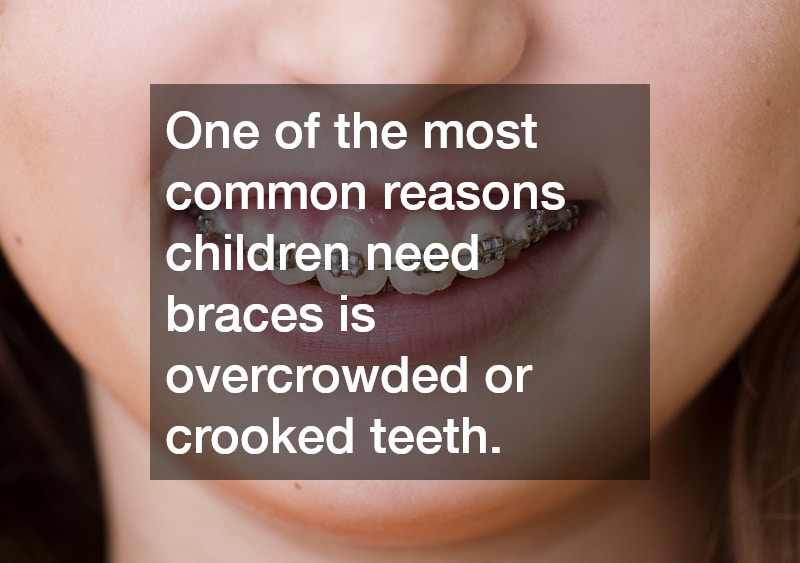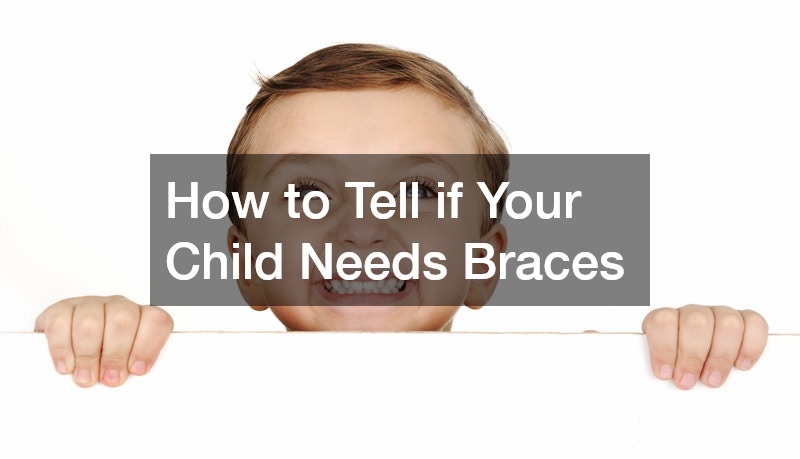
As parents, we all want the best for our children, and ensuring they have a healthy, beautiful smile is no exception. When it comes to dental health, some children may need braces to correct misaligned teeth or bite issues. Early detection of potential orthodontic problems can make a significant difference in the long-term health and appearance of your child’s teeth. But how can you tell if your child needs braces, and when is the right time to consult a specialist in orthodontics for children?
In this blog, we’ll explore the signs that may indicate your child needs braces and the importance of early intervention in orthodontic care.
1. Crowded or Crooked Teeth
One of the most common reasons children need braces is overcrowded or crooked teeth. If your child’s teeth appear to overlap or twist, it may be a sign that their mouth is too small to accommodate all of their permanent teeth properly.
Crowded teeth can be challenging to clean, increasing the risk of tooth decay, gum disease, and other oral health problems.
When evaluating whether your child might need braces, look for visible signs of misalignment, such as teeth that are rotated, overlapping, or positioned unevenly in the mouth. A consultation with a specialist in orthodontics for children can help determine whether braces are needed to correct crowding or crookedness.
2. Overbite, Underbite, or Crossbite
Bite problems, including overbites, underbites, and crossbites, are another common reason for orthodontic treatment. These issues occur when the upper and lower jaws are not properly aligned, leading to functional and aesthetic concerns.
Overbite: An overbite happens when the upper front teeth overlap the lower front teeth significantly. While a small overbite is normal, a more pronounced overbite can cause wear on the lower teeth and lead to issues like difficulty chewing.
Underbite: An underbite occurs when the lower front teeth sit in front of the upper front teeth. This type of bite can affect the appearance of your child’s face and lead to problems with chewing and speaking.
Crossbite: A crossbite is when one or more of the upper teeth bite inside the lower teeth instead of aligning properly. This can cause uneven wear on the teeth and may contribute to jaw pain over time.
If your child has difficulty chewing or their bite appears off, it may be time to consult an orthodontist. Early intervention can help address bite issues before they worsen, potentially reducing the need for more extensive treatment later on.
3. Early or Late Loss of Baby Teeth
The timing of baby teeth loss can also provide insight into whether your child may need braces. Most children start losing their baby teeth around age six, and the process is typically completed by age 12. However, losing baby teeth too early or too late can lead to spacing or alignment issues with the permanent teeth.
If your child loses baby teeth earlier than expected, the surrounding teeth may shift into the empty space, potentially causing alignment problems. On the other hand, if baby teeth don’t fall out on time, they may block permanent teeth from erupting properly, leading to crowding or crookedness.
A specialist in orthodontics for children can evaluate your child’s dental development and recommend the appropriate treatment if baby teeth are affecting the alignment of their permanent teeth.
4. Difficulty Chewing or Biting
If your child frequently struggles to bite or chew food, it could be a sign of a misalignment issue that may require braces. Problems with chewing or biting may indicate that the upper and lower teeth are not meeting correctly, which can lead to discomfort and uneven wear on the teeth.
Children who avoid certain foods or complain of discomfort when eating should be evaluated by an orthodontist. Correcting bite issues early can prevent long-term complications and ensure your child can eat comfortably.
5. Speech Issues
Speech problems, such as a lisp or difficulty pronouncing certain sounds, can sometimes be linked to dental alignment issues. Misaligned teeth or bite problems can affect the way the tongue and teeth work together when forming sounds, leading to speech difficulties.
While speech issues can have many causes, it’s worth considering a consultation with a specialist in orthodontics for children if your child struggles with articulation. Orthodontic treatment can help improve speech clarity by correcting the underlying alignment problems that may be contributing to the issue.
6. Mouth Breathing or Snoring
Children who regularly breathe through their mouths or snore during sleep may have an underlying orthodontic issue. In some cases, mouth breathing is caused by an improper alignment of the jaws, which can restrict airflow and lead to snoring or other sleep-related problems.
Chronic mouth breathing can affect your child’s oral health and lead to dry mouth, which increases the risk of cavities and gum disease. If your child frequently breathes through their mouth or snores at night, it may be worth consulting an orthodontist to determine if braces or other treatments are necessary to address jaw or alignment issues.
7. Thumb Sucking Beyond Age 4
While thumb sucking is a normal habit in young children, prolonged thumb sucking beyond age 4 can negatively impact the alignment of the teeth and jaws. The pressure from the thumb can cause the front teeth to protrude or become misaligned, potentially leading to an overbite or other bite problems.
If your child continues to suck their thumb after age 4 or 5, it’s important to monitor their dental development. An orthodontist can provide guidance on how to address the habit and correct any alignment issues caused by prolonged thumb sucking.
.

